Match the reactions given in Column I with the names given in Column II.
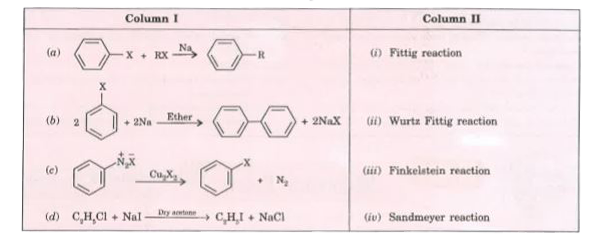
(a)-(ii), (b)-(i), (c)-(iv), (d)-(iii)
Topper's Solved these Questions
- BOOK - MODERN PUBLICATIONCHAPTER - HALOALKANES AND HALOARENESEXERCISE - NCERT examplar Problems (Assertion and Reason Type Questions)10videos
HALOALKANES AND HALOARENES
- BOOK - MODERN PUBLICATIONCHAPTER - HALOALKANES AND HALOARENESEXERCISE - MEMORY TEST (A. Say True or False)14videos
HALOALKANES AND HALOARENES
- BOOK - MODERN PUBLICATIONCHAPTER - HALOALKANES AND HALOARENESEXERCISE - NCERT examplar Problems (Short Answer Type Questions)21videos
HALOALKANES AND HALOARENES
- BOOK - MODERN PUBLICATIONCHAPTER - GENERAL PRINCIPLES AND PROCESSES OF ISOLATION OF ELEMENTSEXERCISE - COMPETION FILE (Integer Type Numerical Value Type Questions)5videos
GENERAL PRINCIPLES AND PROCESSES OF ISOLATION OF ELEMENTS
- BOOK - MODERN PUBLICATIONCHAPTER - ORGANIC COMPOUNDS CONTAINING NITROGEN EXERCISE - UNIT PRACTICE TEST5videos
ORGANIC COMPOUNDS CONTAINING NITROGEN
Similar Questions
Match the reactions given in Column I with the names givn in Column II.
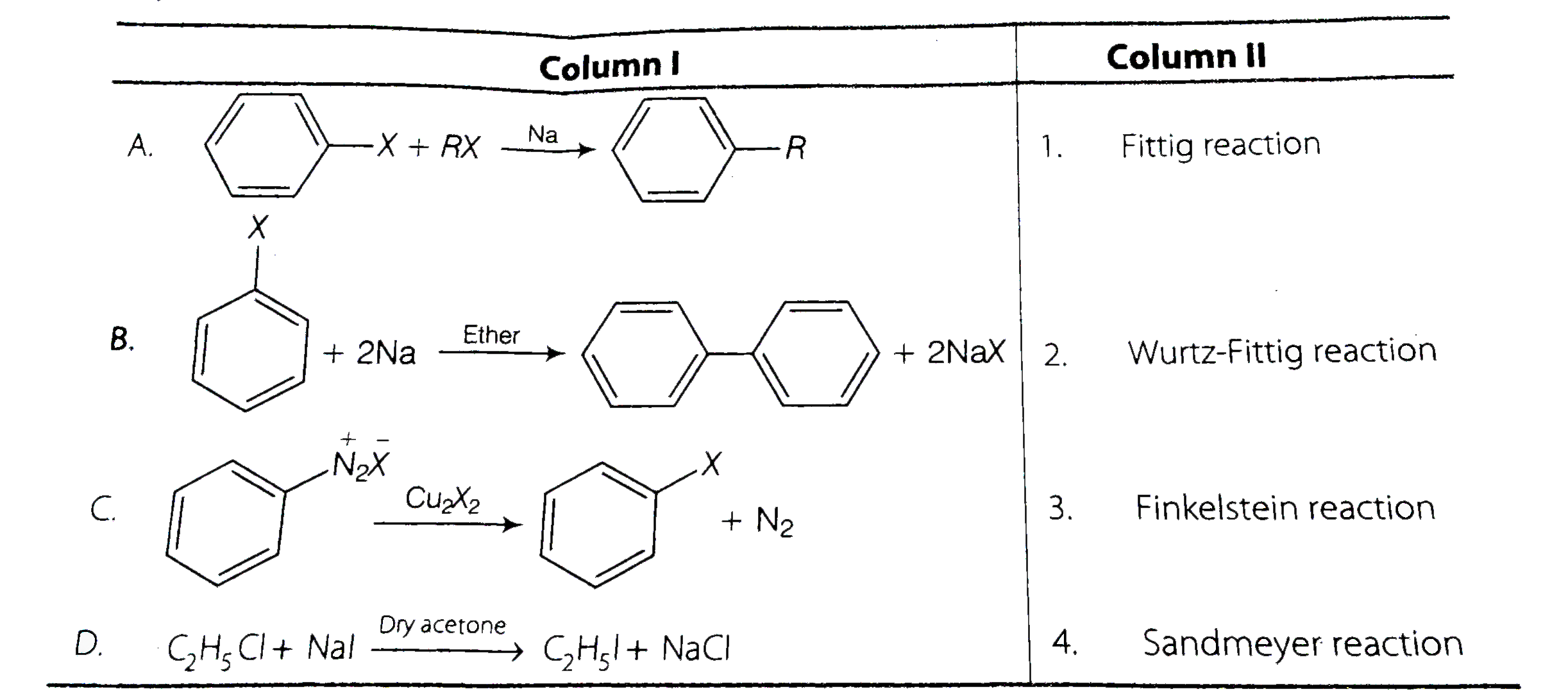 View Solution
View SolutionMatch the reactions given in Column I with the statements given in Column II
 View Solution
View SolutionMatch the reactions given in Column I with the statements given in Column II
 View Solution
View SolutionMatch the reactions given in Column I with the statements given in Column II.
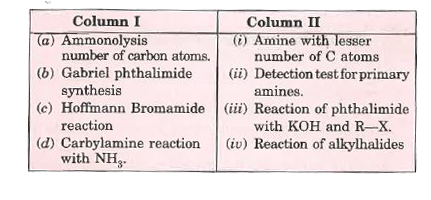 View Solution
View SolutionMatch the reaction given in Column (A) with the names given in column (B):
 View Solution
View SolutionMatch the compounds given in Column I with the items given in Column II.
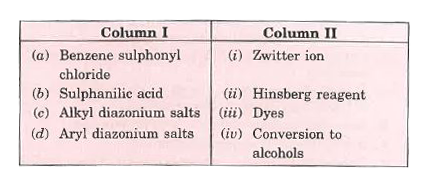 View Solution
View SolutionMatch the properties given in Column I with the metals given in Column II
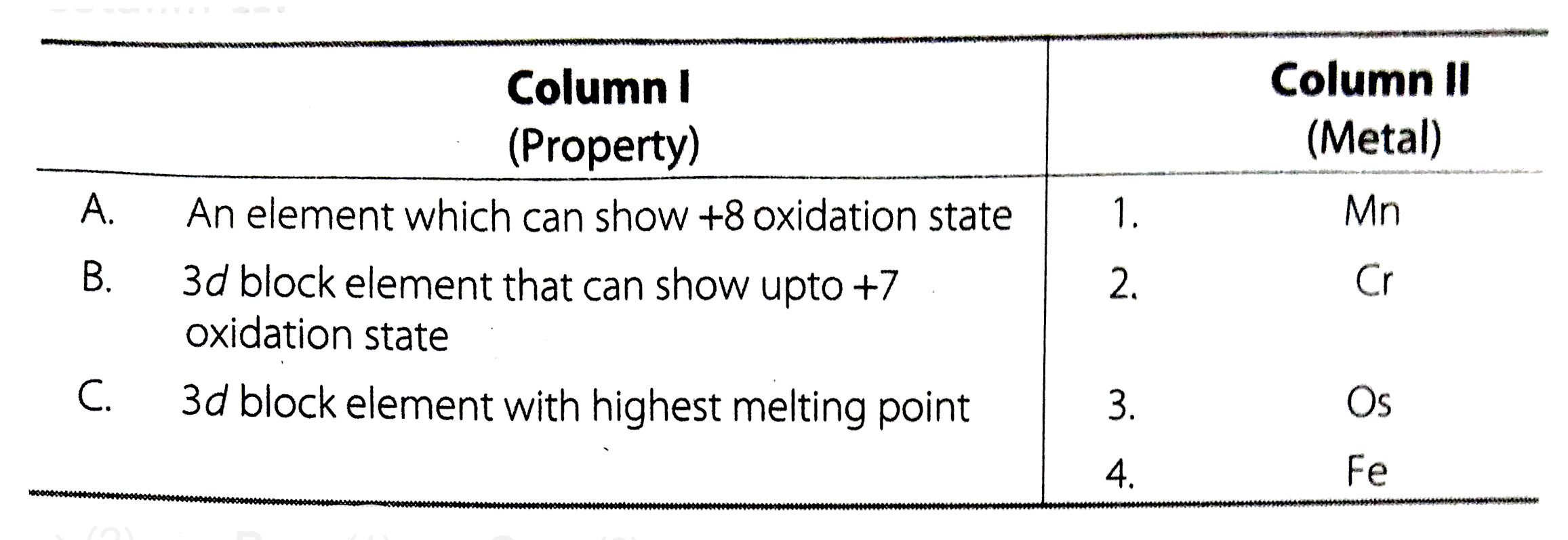 View Solution
View SolutionMatch the objects given in Column I with the materials given in Column II.
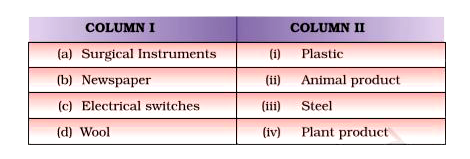 View Solution
View SolutionMatch the terms given in Column I with the statements given in Column II
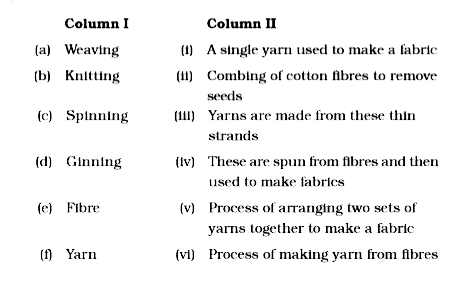 View Solution
View SolutionMatch the ions given in Column-I with their nature given in Column-II.
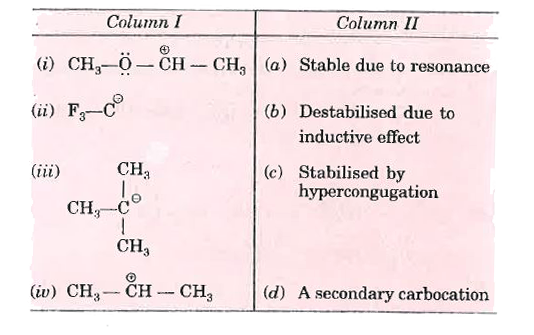 View Solution
View Solution

